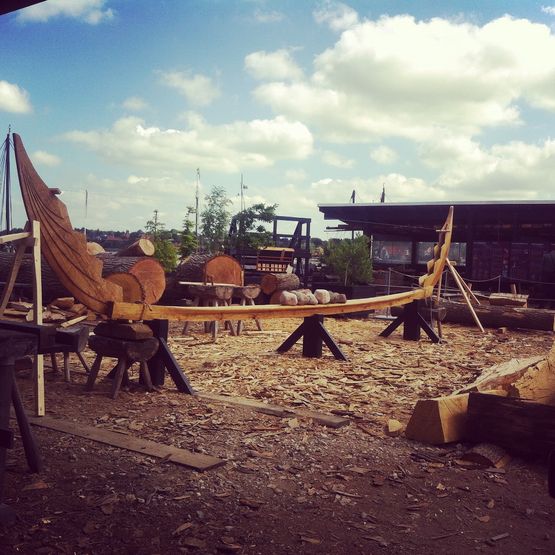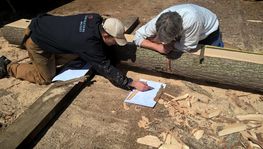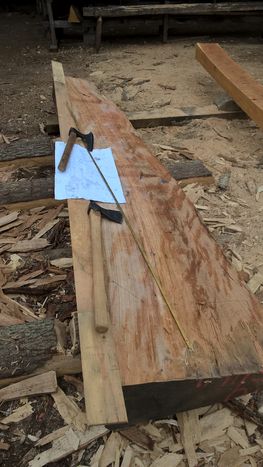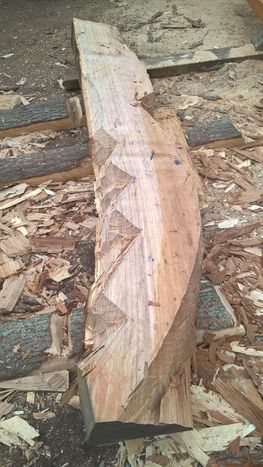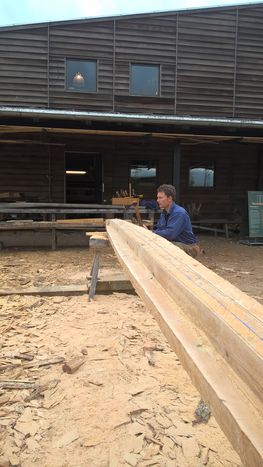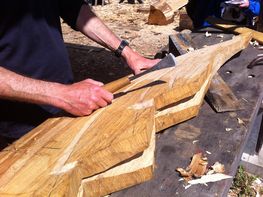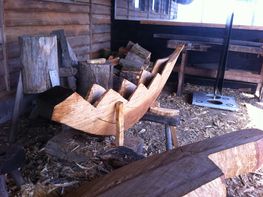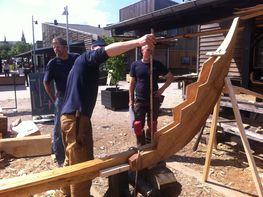Historians tend to agree that the Viking Age came to an end some time after the Battle of Hastings in 1066. Real life tends not to be quite so neatly defined though, and people living in the 11th and early 12th centuries certainly had no awareness of having ‘moved’ from one time period to another: ruling élites aside, life continued on, much as it always had done and daily life in the early Middle Ages was much the same as it had been during the Viking Age.
The same is true of boatbuilding. While the Middle Ages would see a number of major advances in maritime technology, at the time the Gislinge Boat was built in 1130, Scandinavian boatbuilding was still very much rooted in the Viking Age tradition. The most iconic element of Viking Age ships is probably the stems: the image of the streamlined hull, tapering off into narrow and elegant fore and after stems seems to underpin the speed and sailing capabilities of these ships, which made the Vikings the rulers of the seas in the centuries before.
Stepped-stems – such as those on the Gislinge Boat – are also where we see the clearest expression of Viking Age boatbuilding aesthetic. Made from a single piece of timber, the stems are carved in such a way as to create the illusion that the strakes all run seamlessly into the stem-top. This practice is what creates the sleek lines that we typically associate with Viking ships and its presence on a humble working boat like the Gislinge Boat, underlines how central an element of the boatbuilding tradition this was. Together with the t-shaped keel, the stems form the backbone of the boat and are the first elements that are produced when building a clinker-built boat.
The stems and keel for the Gislinge Boat are made of oak from Vallø Forest. The oak was cleaved using the same technique as the large oak for the planks (see images from the cleaving here…) and the initial cleave into halves went like clockwork. Upon closer inspection though, it transpired that the centre of the oak, the pith, had the early onset of some kind of fungus. Asger sent a number of samples to Hussvamp Laboratoriet for analysis and the problem was identified as Ox Tongue fungus (Fistulina hepatica). It had attacked the very centre of the oak but the samples taken confirmed that it hadn't extended further outwards. After much careful deliberation, it was decided that the damage was localised in such a small area that the boatbuilders could continue with the production of the stems, using wood from the unaffected area.
To make the stems, the oak was cleaved further into smaller sections and then the axe comes into play as the principal tool used. The characteristic curve of the stems begins to take shape and you start to get a sense of the eventual proportions of the finished element. Watching the boatbuilders work with an axe is incredible: while most of us would be proud of being able to produce a decent pile of firewood, they wield the axe with a precision and accuracy that literally needs to be seen to be believed. Luckily, Werner, the Museum’s photographer has made a great slow-motion film of Martin working on the after stem, so you can judge their skill for yourself (see the film here…).
The outer shape of the stem is chopped out and the characteristic 'steps' are cut into the backside. The lines along the sides of the stem - where the planks 'merge' into the stem - are marked out and the initial carving is done with a chisel. The stem is then hollowed out to the correct thickness, varying from 5cm at the stem-top to just 1cm at the join where the boards run into the stem.
The 5.6m long keel is t-shaped and forms the spine of the boat. The keel was made from an oak trunk, which was gradually cut down to size: first it’s roughly cut into a square profile and from there, the more detailed work in shaping the keel begins. Again, an axe is used as the primary tool, although the boatbuilders also use chisels when marking specific depths for the cuts and for the finer shaping of the curved ‘wings’ that form the keel’s outer edges. The keel was finished some time before the stems, so it was given liberal coatings of linseed oil and stored in the shade to prevent the oak from cracking.
The keel and stems were joined using scarf joints which are fastened with three iron rivets each. Tarred wool was placed between the opposing faces of the scarf as caulking. This helps to make the joint watertight.
The raising of the stems is an important stage in the construction of any boat. For the first time, visitors to the Museum boatyard could get a direct visual idea of the final scale of the Gislinge Boat and while the previous weeks had seen the boatbuilders scattered around different parts of the boatyard as they variously worked on the individual elements, now the work begins to be gathered around the central focal point of the keel and stems.
The boatbuilders were now ready for the next big stage in the process: the production of planks and the first steps towards building up the hull.
